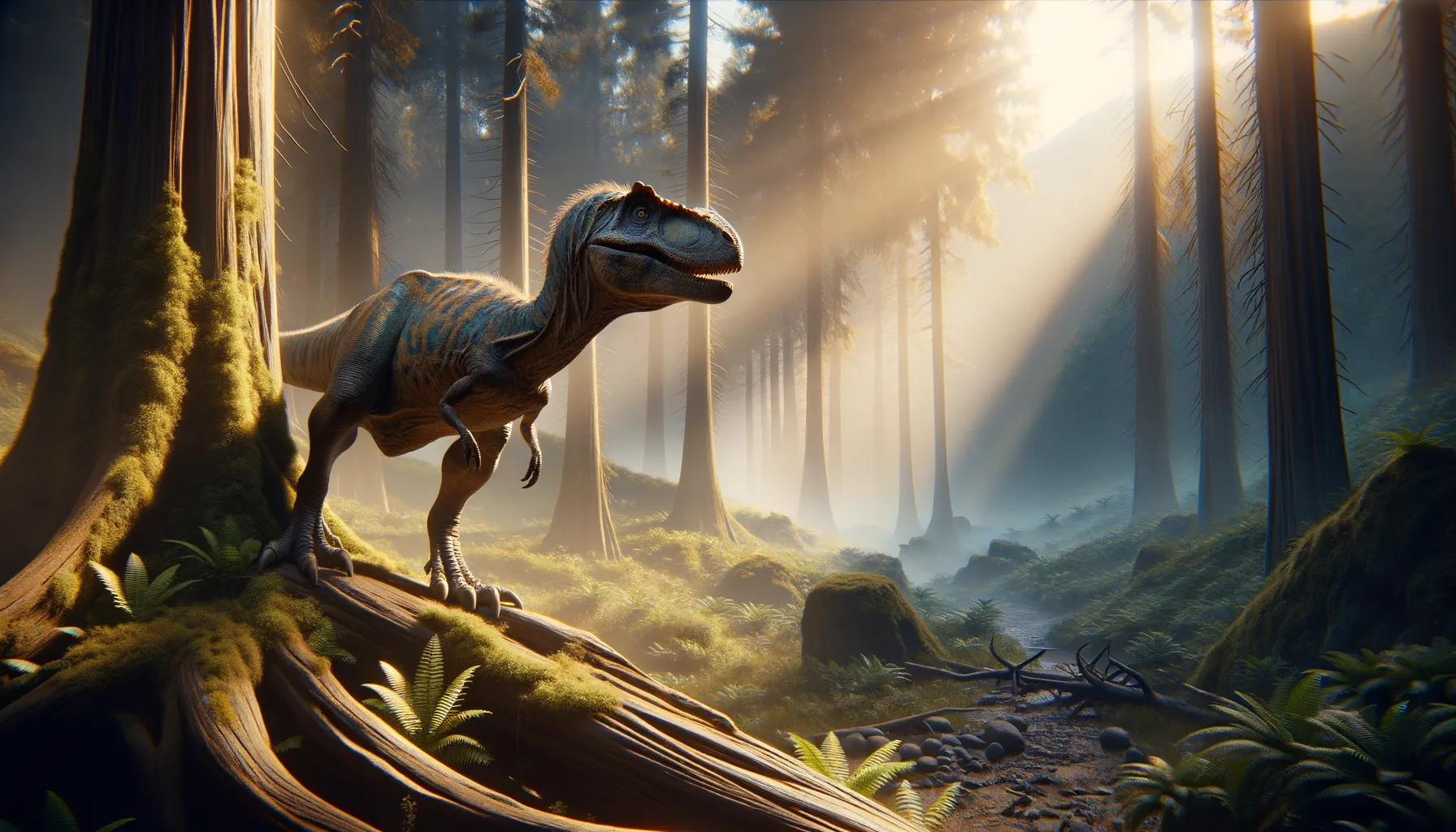
Calamosaurus
Cretaceous predator with a mystery to unveil!
Period
Cretaceous
Length
Estimated to be around 4 to 5 meters long.
Height
Approximately 1 meter tall at the hips.
Weight
Estimated to weigh around 50 to 100 kg.
Calamosaurus was a small theropod dinosaur from the Early Cretaceous period, known primarily from limited fossil evidence found in England. As a member of the theropod group, it likely had a carnivorous diet and possessed a light, agile body adapted for hunting. Its exact appearance and behavior remain partly speculative due to the fragmentary nature of its remains, but it provides valuable insight into early Cretaceous predatory dinosaurs.
Diet
Calamosaurus was likely carnivorous, feeding on smaller animals it could catch. Its diet might have included small mammals, reptiles, or other dinosaurs. Its teeth and agile build suggest a meat-eating lifestyle.
Hunting
With its likely swift and nimble body, Calamosaurus would have used speed to catch its prey. It probably employed stealth and quick bursts of energy to surprise and capture smaller, less agile creatures. Its hunting tactics remain largely speculative.
Environmental challenges
During the Cretaceous period, Calamosaurus faced a world of changing climates and landscapes, with rising sea levels shaping its environment. This era saw the spread of flowering plants, altering the ecosystems upon which many animals depended. The competition for food sources would have been fierce, with other predators and changing prey availability influencing its survival strategies.
Speed
Likely agile for a predator of its size.
Lifespan
Possibly lived up to 20 years.
First discovery
Found in the Isle of Wight, England, in the 19th century.
Fun Facts
- Calamosaurus was a small theropod dinosaur that lived during the Early Cretaceous period.
- Its name means 'reed lizard,' which refers to its slender, lightweight build.
- Calamosaurus is known primarily from partial remains, making it somewhat of a mystery to paleontologists.
- It was discovered in the Isle of Wight, which is a famous location for dinosaur fossils in the UK.
- Calamosaurus likely had a carnivorous diet, preying on small animals or scavenge.
- This dinosaur is part of the Coelurosauria group, which includes birds and their closest dinosaur relatives.
- Calamosaurus was likely a fast and agile runner, based on its probable lightweight structure.
Growth and Development
Like many theropods, Calamosaurus would have hatched from eggs and undergone a growth spurt after birth. Juveniles likely grew rapidly to increase survival chances against predators. Their development was probably influenced by environmental factors, such as food availability and climate.
Habitat
Calamosaurus inhabited what is now the United Kingdom, an area that was then a mix of forests, rivers, and coastal environments. This region provided diverse habitats with ample food sources. Its adaptability helped it survive in various ecological niches, showcasing a flexible way of life.
Interaction with other species
Calamosaurus likely competed with other small predators for food, influenced by the presence of larger carnivores. It may have also had to avoid becoming prey to bigger dinosaurs. Its interactions extended to both hunting small animals and outmaneuvering its rivals.
Natural lifespan
Its lifespan was likely around 15 to 20 years in the wild.
Reproduction
Calamosaurus, like other theropods, was oviparous, laying eggs in nests. Its reproductive behavior might have included primitive parental care, common among theropods. Such care would have ensured the survival of its hatchlings against environmental threats.
Social behaviour
Calamosaurus might have been solitary, hunting alone to avoid competition. However, it may have formed loose groups for safety or during breeding seasons. Its social behaviors were likely influenced by environmental pressures and resource availability.
Fossil locations
Calamosaurus fossils have been found primarily on the Isle of Wight, a rich site for Early Cretaceous discoveries. These fossil fragments help paleontologists piece together its existence. The rarity of complete finds leaves much of its biology to educated interpretation and comparison with related species.
